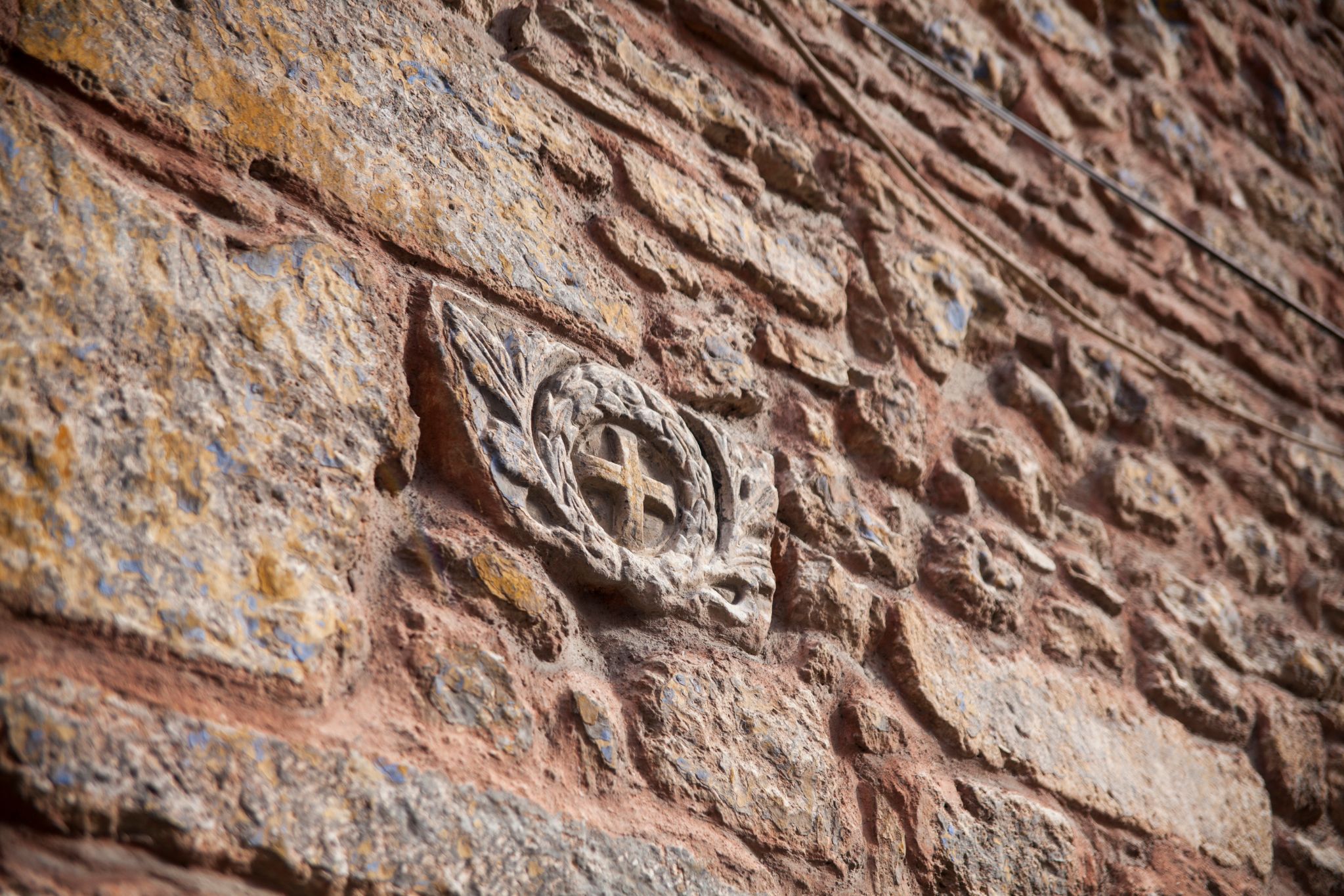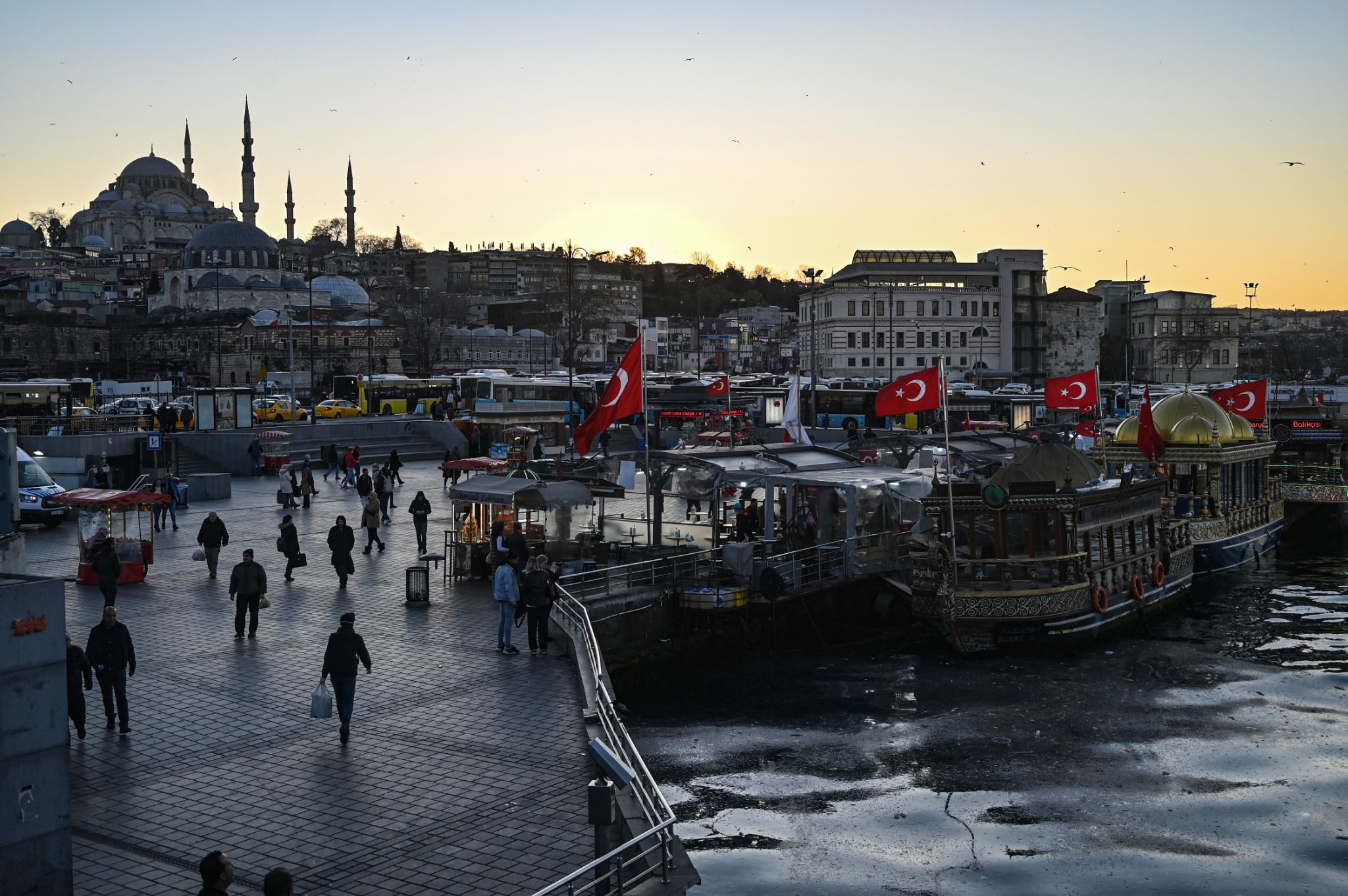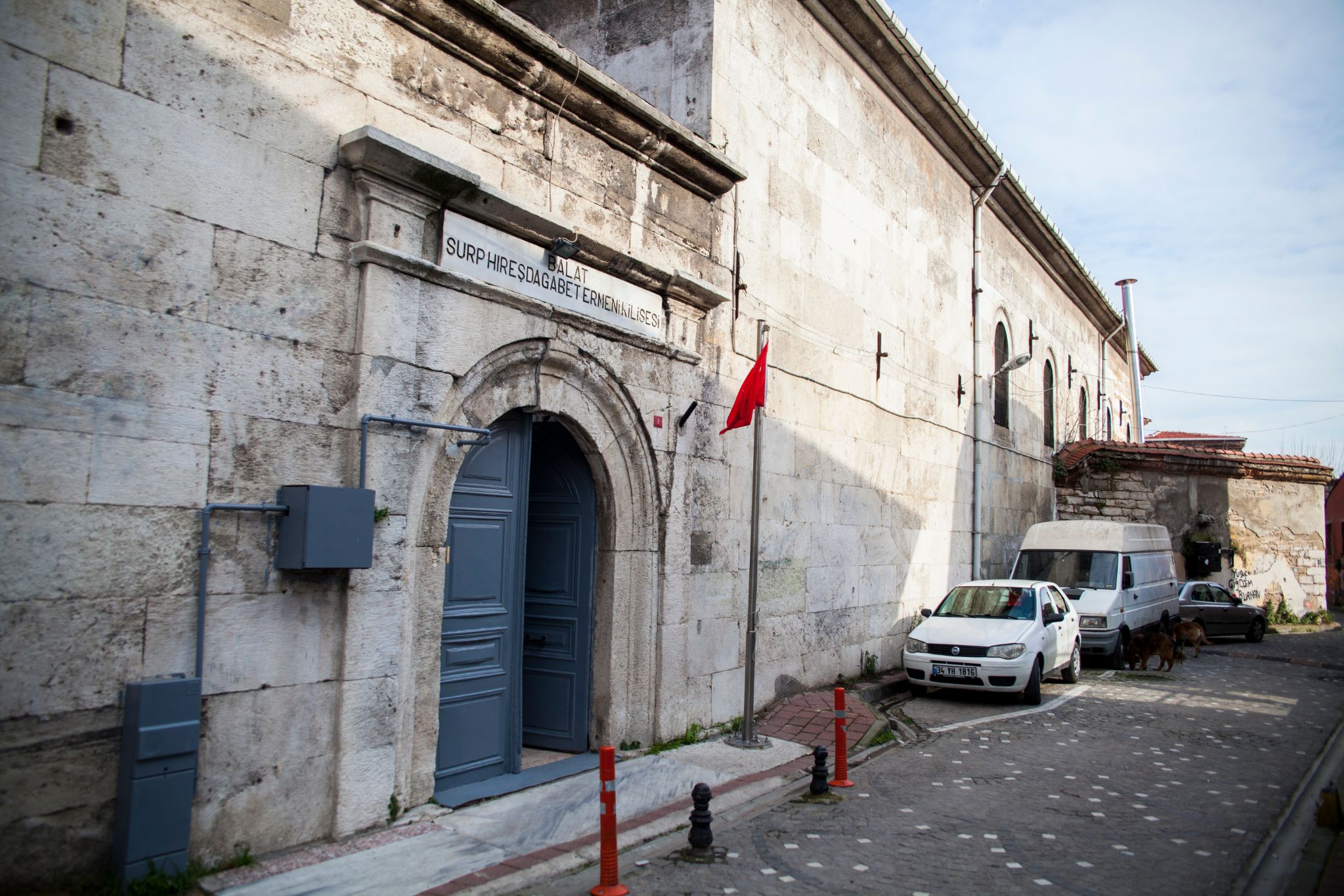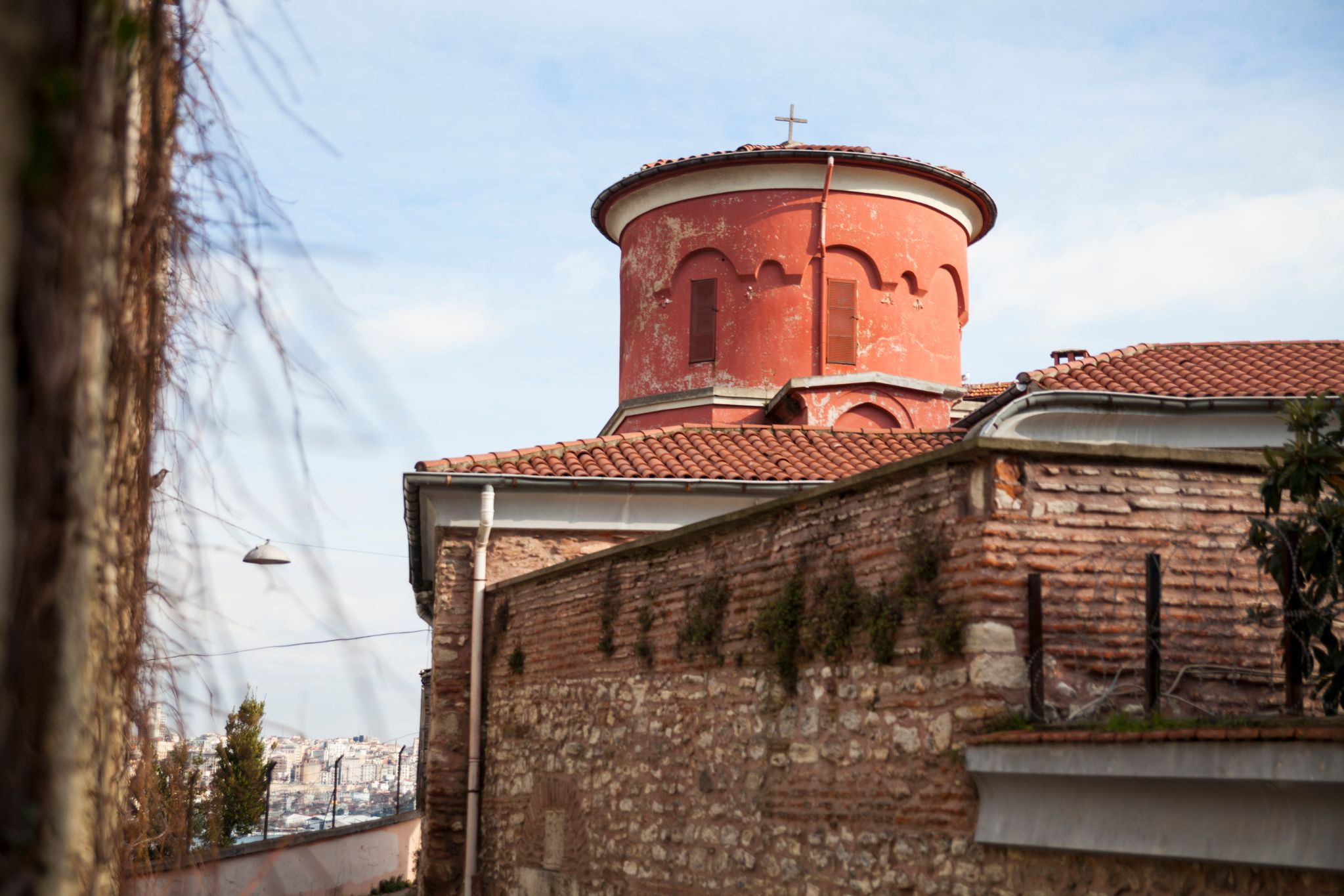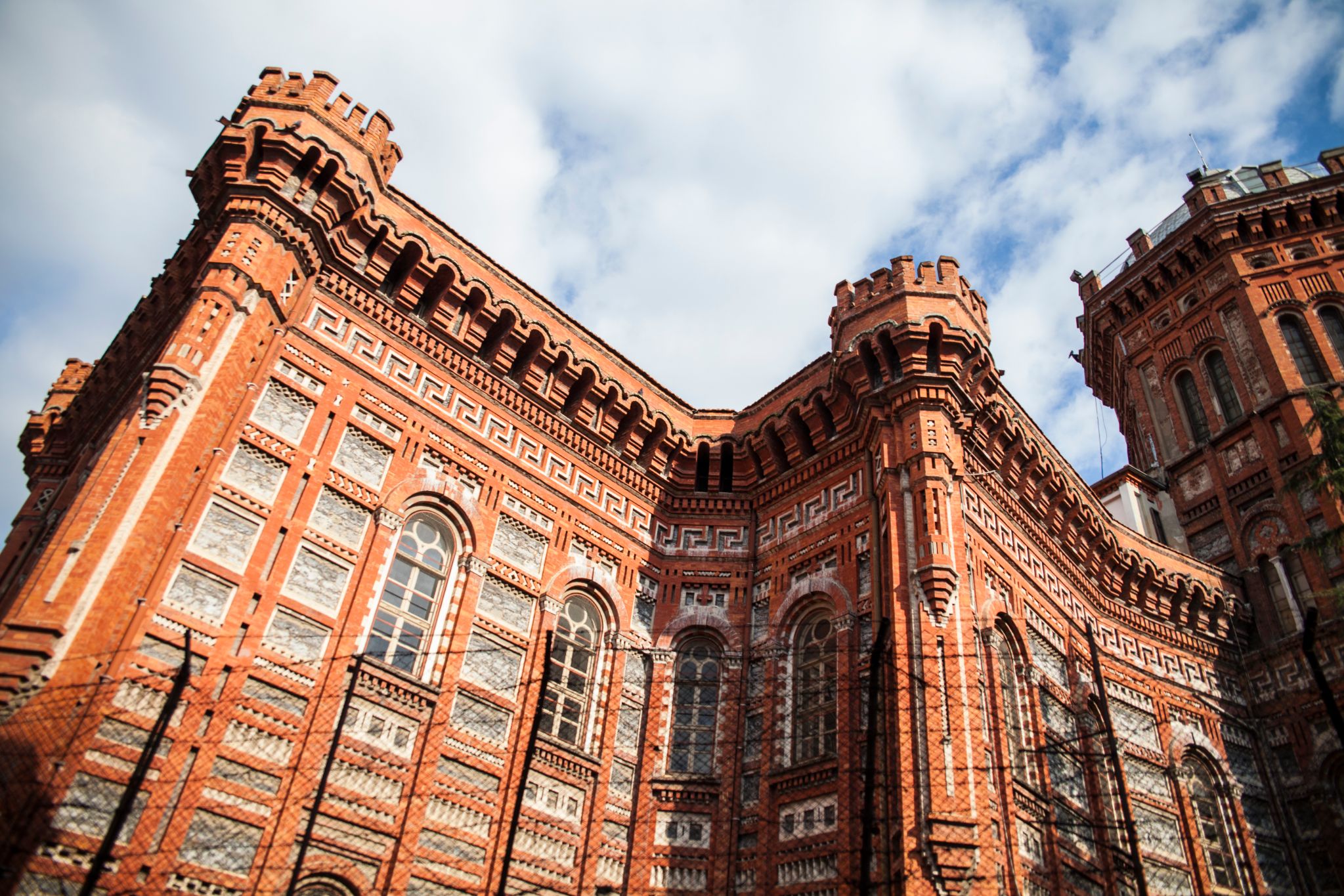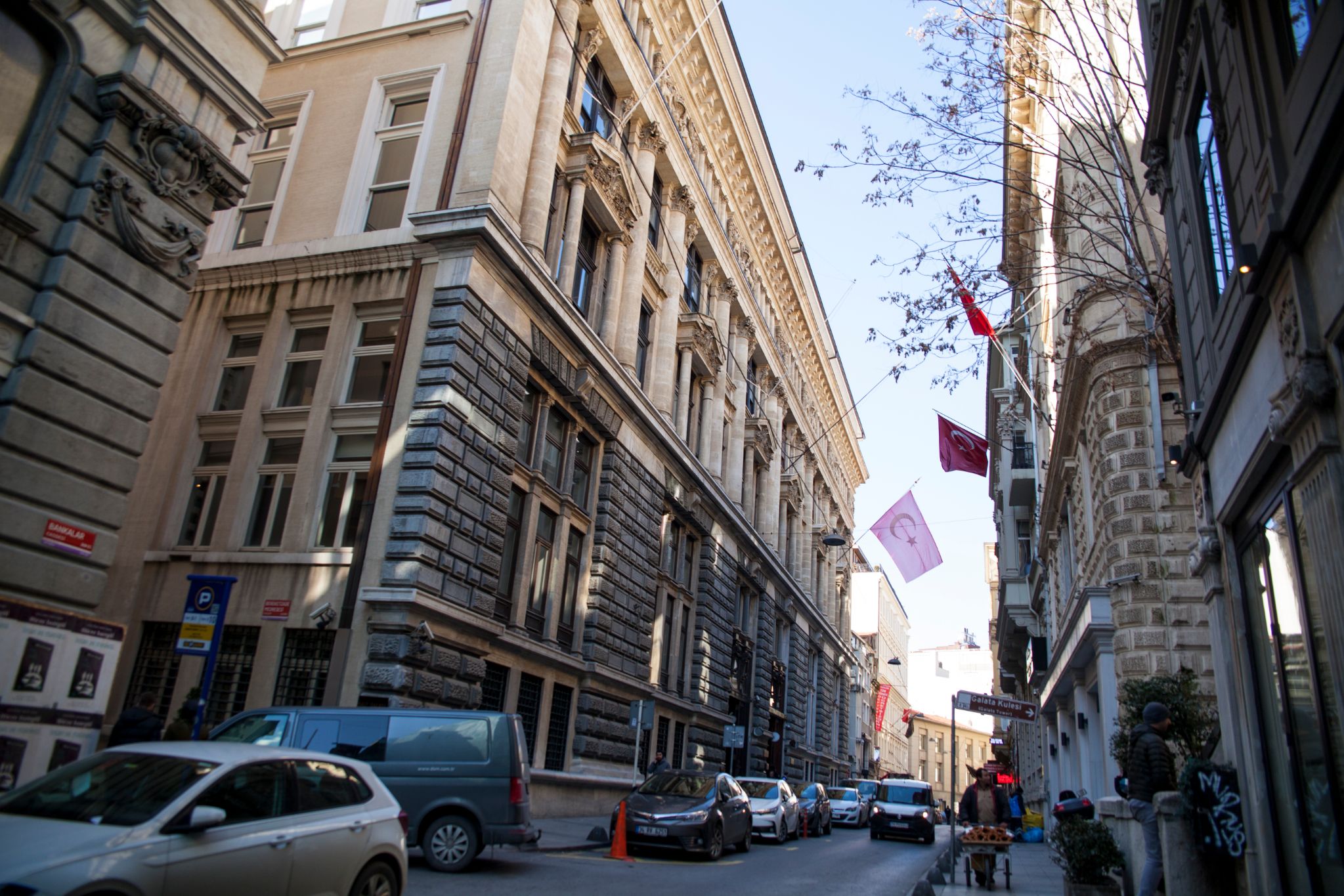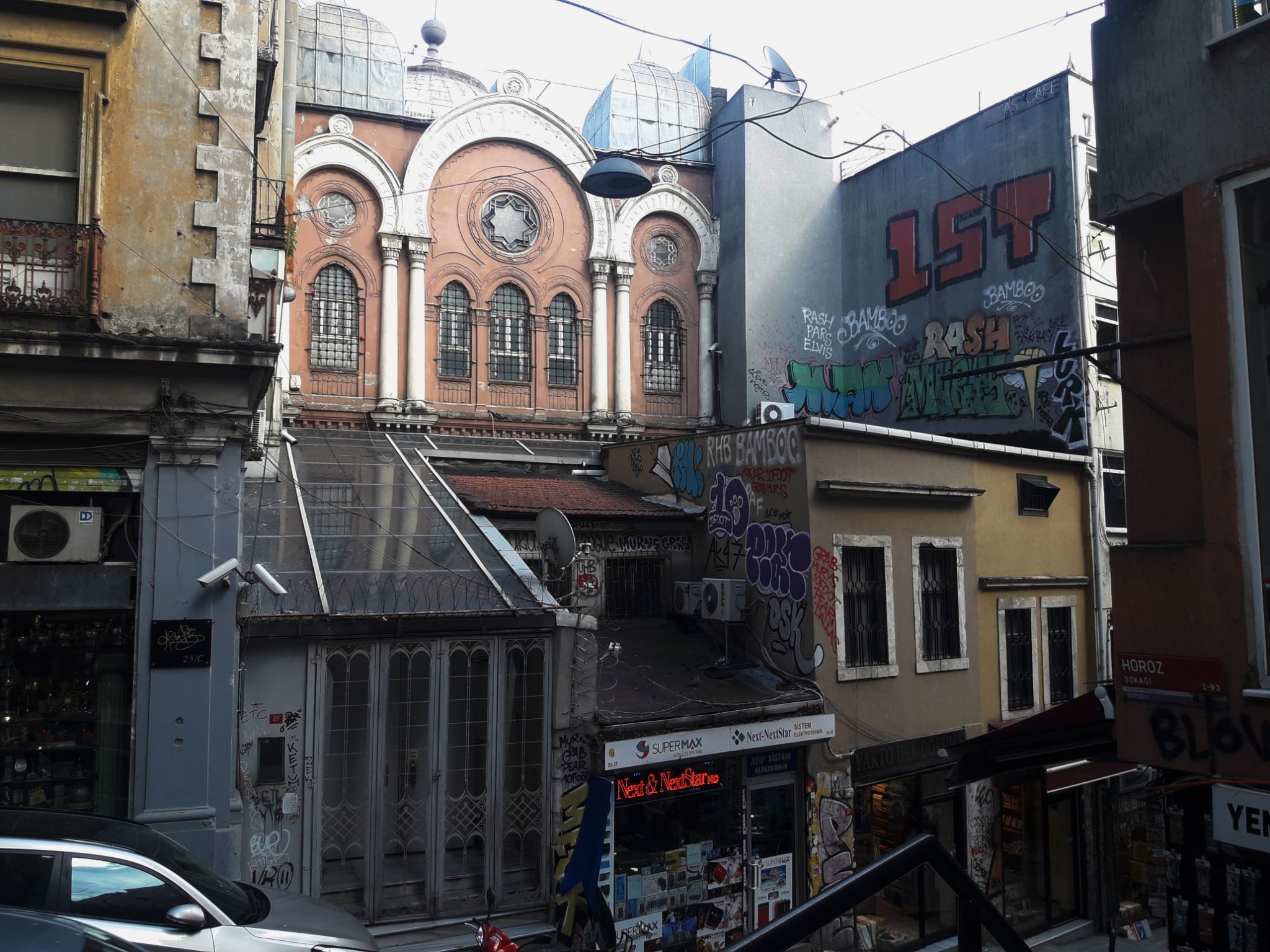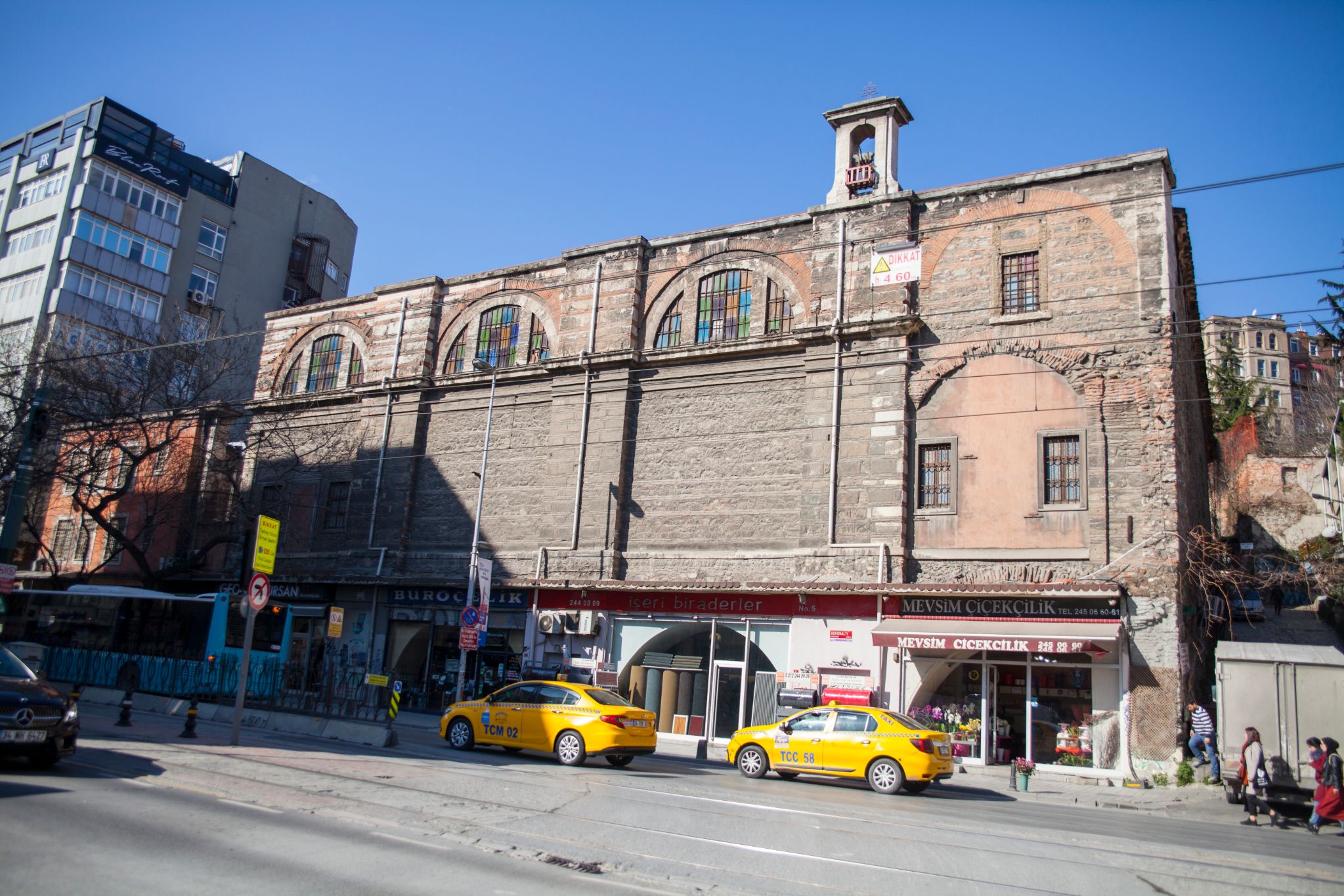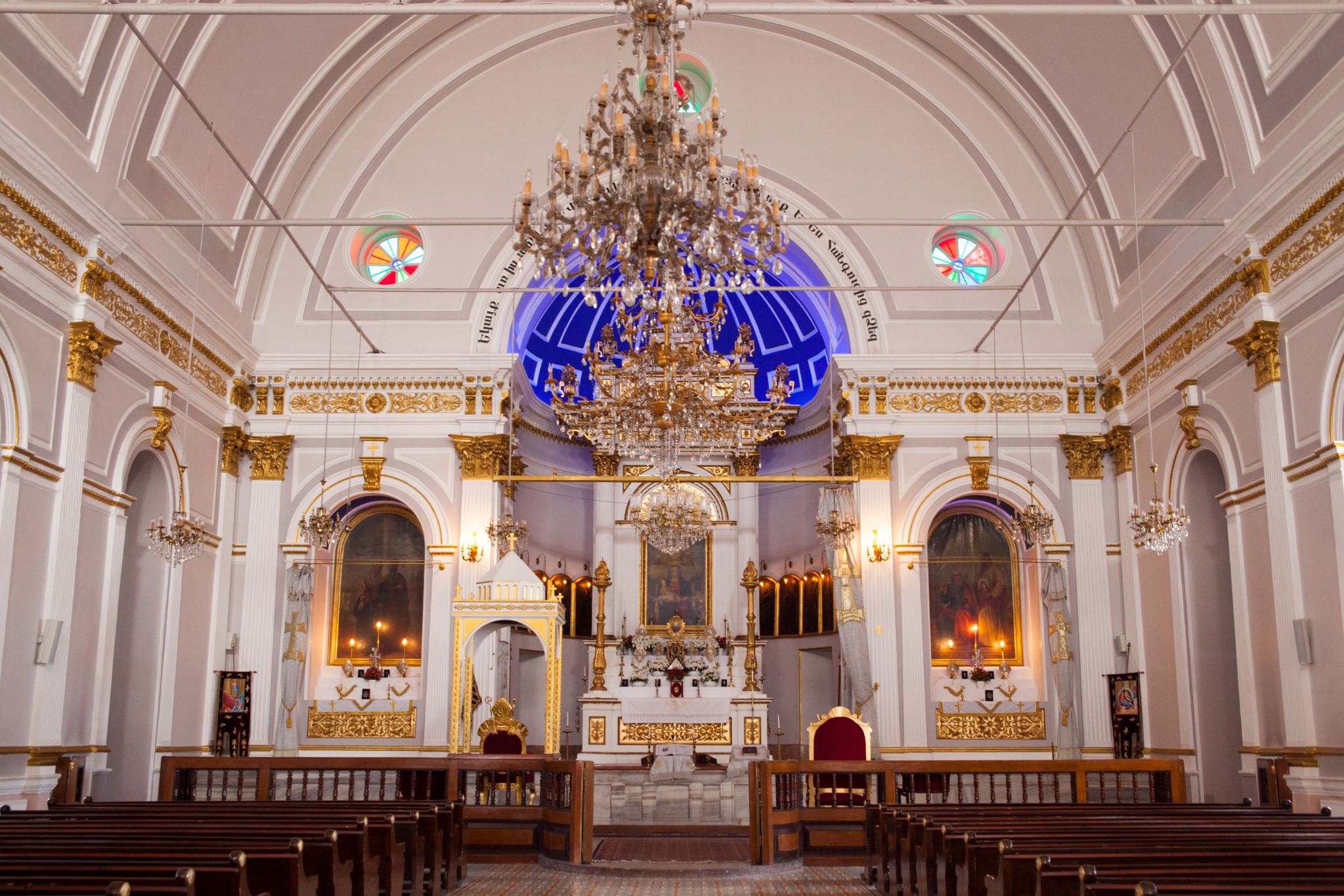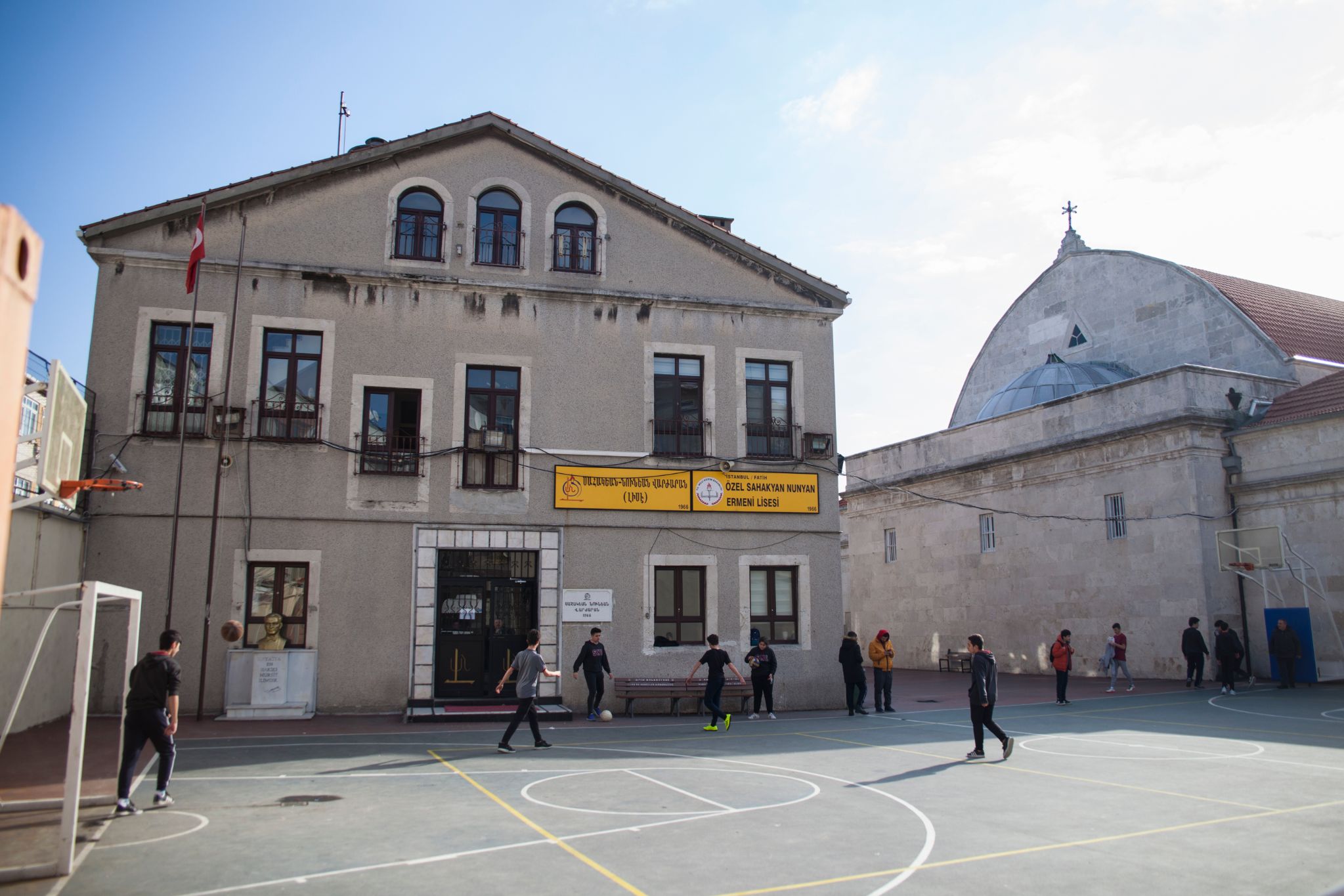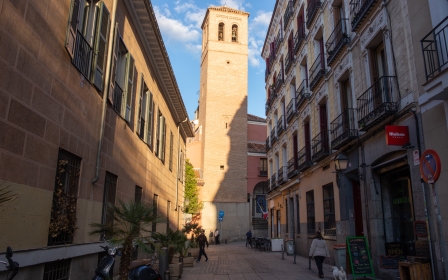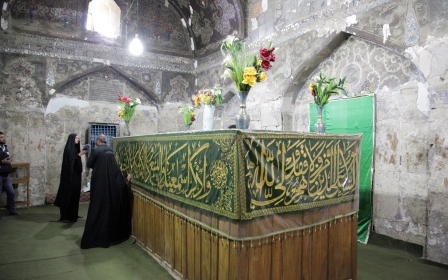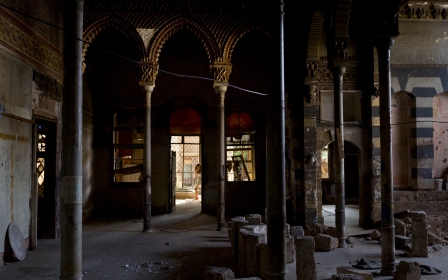The hidden stories behind Istanbul's ancient neighbourhoods
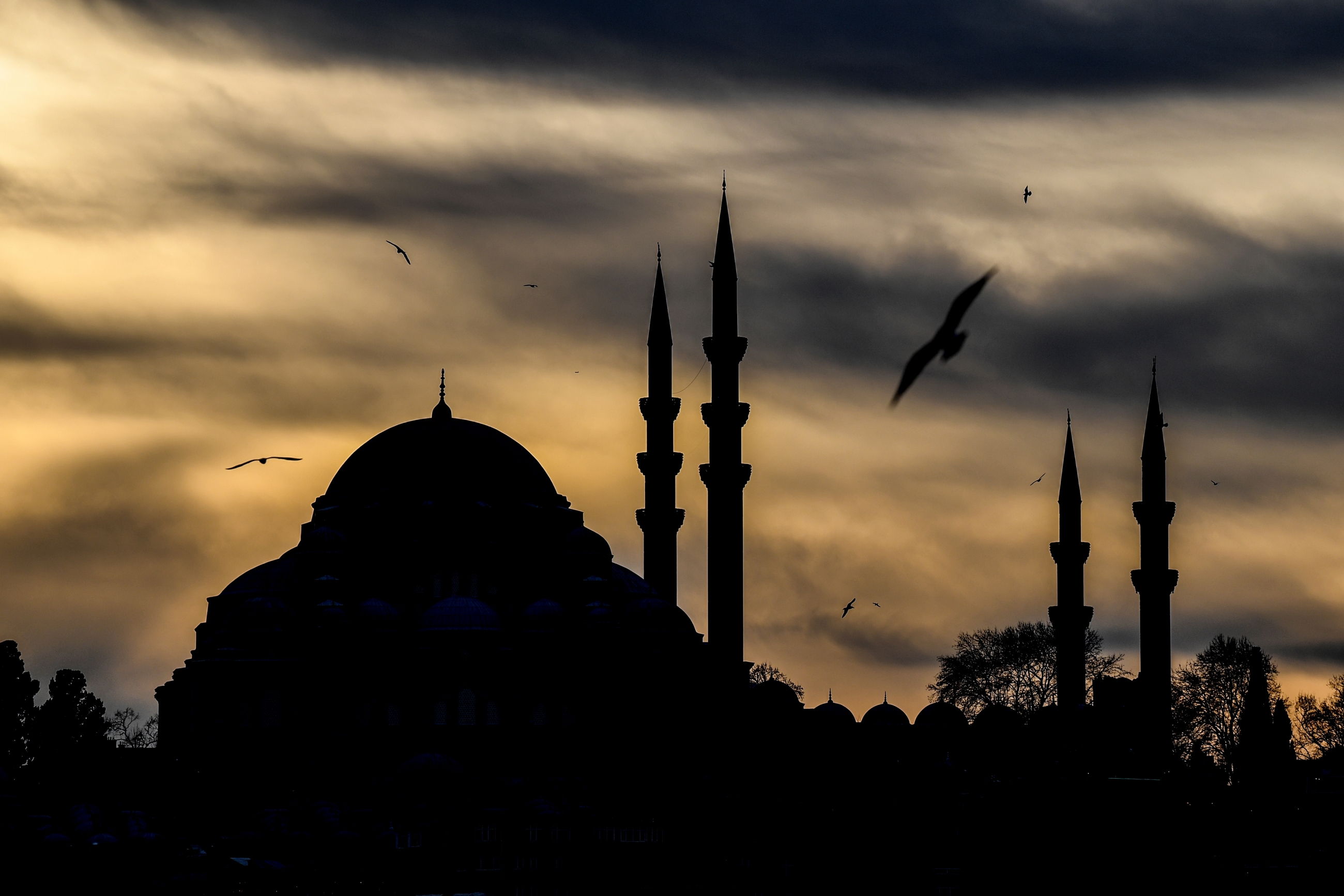
The ancient city of Istanbul, the economic capital and largest city in Turkey, has been the capital of many empires, including the Romans (who named it after emperor Constantine), Byzantine, and the Ottomans.
Straddling both Europe and Asia, Istanbul has long been a destination for travellers. But beyond the cruise boats on the glistening channel, or the ancient markets further inland, lies a city famous for its rich heritage.
And, as the Istanbul-based cultural foundation Hrant Dink argues, much of this remains untold.
To try and address this, Hrant-Dink launched a new mobile application earlier this year called KarDes, meaning “brother” in Turkish and “map” in Armenian. The app is designed to help users rediscover buildings of significance to Istanbul’s Armenian, Greek and Jewish communities.
Considering Istanbul is now a city of 16 million people, it is easy to pass historical buildings in everyday life without noticing one of them.
Or as Rudi Sayat Pulatyan, a research coordinator for KarDes said: “You see the building, but you don’t know the story. It’s invisible."
Once a melting pot of cultures, conflicts that came to the fore during the two world wars left modern-day Turkey with dwindling Armenian, Greek, and Jewish populations.
While 32 countries have recognised the mass killings of over a million Armenians by Ottoman forces as genocide, Turkey says the killings were not part of a systematic campaign. Many Armenians who remained in Turkey converted from Christianity to Islam in the following years to avoid persecution.
The population now only numbers between 50,000 and 60,000, with the majority of Armenians in Turkey now living in Istanbul.
Ethnic Greeks had lived in Anatolia - the landmass of Turkey on the Asian continent - since before Alexander the Great. But following the Ottoman defeat in World War 1, attempts to apportion the former empire by western allies led to a three-year war with Greece, which had been promised parts of the Anatolian coast.
A forced population exchange was outlined during the 1923 Lausanne Treaty that would see more than a million of Turkey’s Greek Orthodox population having to resettle in Greece.
And in 1955, following news insinuating that Greeks had planted a bomb in the Turkish consulate in Greece, an anti-Greek pogrom ignited in Istanbul. The pogrom left over a dozen people dead and forced thousands of Greeks to flee Istanbul.
Today, less than 2,000 Greek Christians still reside in the city.
For Turkey’s Jewish population, who have biblical connections to eastern Anatolia, it was after the Turkish Republic was founded that they began to immigrate.
In a bid to promote a unified Turkish identity, the 1934 Resettlement Policy enforced collective resettlement and forced assimilation of non-Turks, including Jews, into Turkish culture. A series of violent attacks in the same year against some of the country's Jewish population, including in the Thrace regions, led to thousands of Jews fleeing to Istanbul and beyond.
It is the forgotten stories of these cultures that Hrant-Dink aims to record. “We believe revealing the contribution and stories of the past and present residents of the city will enable different groups and cultures to be remembered, respected and acknowledged further," Pulatyan told Middle East Eye.
"This will promote pluralism and dialogue and it will eventually create an atmosphere where [the] coexistence of differences is adopted as the main value of the society.”
Powered by Google Map, the app also offers what the developers have dubbed “memory tours”.
These tours are narrated by various local artists, telling stories of unknown sites in well-known neighbourhoods of Istanbul to be relayed. There are 12 “Memory Tours” in Istanbul, to almost 900 locations, each lasting around two hours.
MEE decided to take a trip down the city's myriad memory lanes, setting off on a tour of nine of the lesser-known attractions in the city.
1. Surp Hiresdagabet Church
Weaving through colourful coffee shops, buildings covered with vines, vintage stores, and creative workshops, the Surp Hiresdagabet Church is one of the stopping points on the KarDes Balat tour.
Balat is a colourful neighbourhood close to Istanbul’s city centre and an important multicultural tour through KarDes. According to the application, the history of Balat – which takes its name from a Greek word meaning palace - goes as far back as the Byzantine period. The neighbourhood has been home to Greeks, Armenians, Kurds and Turks for centuries.
As the tour explains, this church was once a Greek church called Agios Stratis. It was then handed to the Armenians in the early 1600s under the Ottoman sultan’s policy of balance between the Greeks and Armenians. Many other Greek churches were converted to mosques.
According to local stories passed down by locals through generations, the church used to be a site of healing. As the application states: “The blind, the deaf, couples wanting children, and people suffering all manner of problems come to this church to pray, make sacrifices, and take part in healing services.”
2. Church of Saint Mary of the Mongols
Down the main street of Balat, the smell of sea rises to fill the air. At the top of a hill overlooking the Bosphorus Strait, a tall red tower stands out in bright red from behind high walls.
This is the church of Saint Mary of the Mongols, the only remaining Byzantine church for Istanbul’s Greek community, which was never converted into a mosque.
It is open today to the Greek Orthodox community and other visitors that happen to pass by.
KarDes explains the church’s alternative name is “Bloody Church”, as legend claims the area was a scene of violent battles when the city was captured by the Ottomans. “The blood of those injured in the fighting around the church flowed down the steep slope and into the Golden Horn,” the app story reads.
3. Fener Greek Boys High School
Right next to the Bloody Church and hard to miss with its imposing castle-like ornate exterior, is the Fener Greek Boys High School. Its history dates back more than five centuries.
Before this current building was constructed using donations in 1881, an Academy of the Patriarchate stood in its spot.
Quality education was provided for Orthodox children by the Patriarchate, creating an intellectual and cultural hub for the Greek community.
Known by locals as The Red Castle - and although class sizes may have dwindled - the school remains open to the Greek community, teaching a Turkish curriculum alongside the Greek language, literature, and religion.
4. The Ottoman Bank
Now home to the Salt Gatala exhibition and research space, the Ottoman Bank was inaugurated in 1892. Pinpointed on the Karakoy tour of the KarDes application, an inner-city suburb sitting on the Bosphorus, the Ottoman Bank is an impressive example of both neoclassical and oriental architecture.
According to the app, in 1896 this staunch building was at the centre of the “Ottoman Bank Raid,” when the Armenian Revolutionary Federation took over the bank in order to draw attention to the injustices perpetrated in the Ottoman empire’s east and to gain support for the Armenian struggle. Both security personnel and Armenian activists lost their lives in the takeover.
Inside the Ottoman Bank can feel a bit chilly, since the building blocks out the sun shining from the Asian side of Istanbul across the Bosphorus.
5. Ashkenazi Synagogue
Climbing up a hill from the point of Karakoy, which sees ferries departing to the Asian side and Istanbul's Golden Horn, the early 20th century Ashkenazi Synagogue is tightly nestled between buildings on a cobblestone street. Its construction was supported by Ashkenazis living in Austria at the time.
Walking up the stairs opposite the synagogue and looking skywards, the Star of David can be spotted, marking this as a place of Jewish worship.
One of only three Ashkenazi synagogues in Istanbul, it is the only one still conducting weddings, funerals and religious ceremonies.
The building’s facade is ornate and European in style, while the interior contains Islamic architecture such as pendant vaults, an interior dome and horseshoe-shaped arches, resembling an Ottoman mansion.
6. Surp Pırgic Armenian Church
Continuing the Karakoy tour, we came across the Surp Pirgic Armenian Church. The church can be easily missed, since the lower floors of the building are now occupied by various local businesses, selling upholstery and flowers.
It is the oldest Armenian church in Istanbul. Its construction began in 1830 and opened three years later.
KarDes retells a story of when the plague came to Istanbul, and the church congregation walked through the streets carrying pictures of the Virgin Mary and Baby Jesus. Following this, the plague came to an end, which the people believed was thanks to the church’s action.
Following the ordeal, the Ottoman Sultan Mahmud II rewarded the congregation with gifts.
7. Agios Minas Greek Orthodox Church
Samatya was a small fishing village long before Istanbul sprawled out and grew in the area, though somehow the neighbourhood has still maintained its quaint village feel. Once called Psamathos, meaning sand in Greek, the name turned into Samatya in Turkish.
As part of the KarDes tour of Samatya, on the edge of the Marmara Sea, the guide tells of how people used to come and swim on the sandy beaches, though it’s hard to believe now considering a major highway has cut the village off from the shore and most of the beach has been filled in. Even so, the smell of the sea still wafts through the village as fresh fish is cooked for passers-by.
The area has always been home to a large non-Muslim population, and after the Republic of Turkey was founded, many Armenians found refuge in Samatya after fleeing Anatolia.
The Agios Minas Greek Orthodox Church was built in the 19th century in Samatya on the remains of a church from the 4th century. During the Istanbul pogrom in 1955, the church was badly damaged, along with 73 other Greek Orthodox churches across Istanbul.
8. Surp Kevork Armenian Church
Past all the fish shops and restaurants in Samatya is the Surp Kevork Armenian Church, with a stunning view over the Marmara Sea.
Originally built as a Greek Orthodox Church in the 11th century, Sultan Mehmet II handed it to the Armenians, fuelling clashes between the two ethnic groups.
Gregor, a local Armenian Christian, happily greeted MEE in the church and spoke of his childhood growing up in Samatya.
“When I was a child there were a lot of Greeks here, but they all ended up moving to Greece,” Gregor said.
9. Sahakyan Nunyan Armenian School
Around the corner from the church is the oldest Armenian school in the district, first built in 1461.
While it is not the most aesthetically pleasing building, it has special importance for Armenians in Turkey. After 1918, when many Armenians were fleeing from their eastern homeland in Anatolia, the school was opened as a refuge for those finding safety in Istanbul, keeping its doors open to them for nearly 20 years.
Still functioning as a school today, it is one of the hundreds of buildings that stand testament to Istanbul's vivid past.
This article is available in French on Middle East Eye French edition.
Middle East Eye propose une couverture et une analyse indépendantes et incomparables du Moyen-Orient, de l’Afrique du Nord et d’autres régions du monde. Pour en savoir plus sur la reprise de ce contenu et les frais qui s’appliquent, veuillez remplir ce formulaire [en anglais]. Pour en savoir plus sur MEE, cliquez ici [en anglais].



